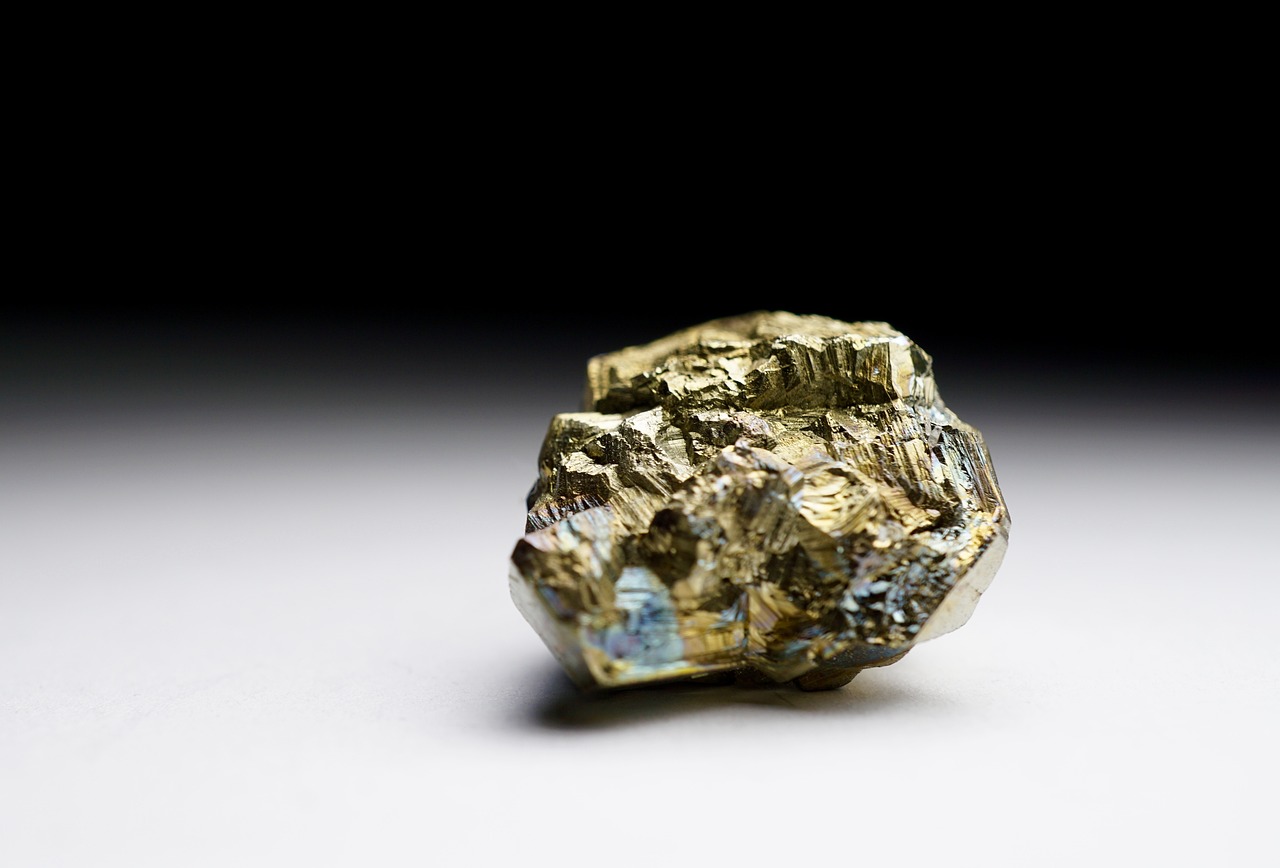The Use of Color Symbolism in Ancient Religions
Colors have held symbolic significance in ancient religious practices. Understanding the meanings behind these colors provides insight into the beliefs and rituals of ancient civilizations. This article explores the use of color symbolism in various ancient religions.
Red often symbolized passion, vitality, and blood in ancient religions. It was used in ceremonies related to sacrifice, love, and war, representing both life and death in different contexts.
Blue was associated with the divine, spirituality, and protection in many ancient religious traditions. It symbolized the heavens, truth, and purity, often used in rituals to invoke spiritual guidance.
Yellow symbolized wealth, power, and the sun in ancient religious practices. It represented light, energy, and prosperity, used in ceremonies to attract abundance and success.
Green was linked to nature, fertility, and growth in ancient religions. It symbolized rebirth, renewal, and harmony, often used in rituals celebrating the cycles of life and the earth.
White symbolized purity, innocence, and enlightenment in many ancient religious beliefs. It represented peace, divinity, and transcendence, used in ceremonies to purify the spirit and connect with the divine.
Black symbolized mystery, death, and the unknown in ancient religious symbolism. It represented the underworld, transformation, and the hidden aspects of existence, often used in rituals related to mourning and introspection.
Purple was associated with royalty, spirituality, and wisdom in ancient religious contexts. It symbolized power, luxury, and divine connection, used in ceremonies to honor deities and spiritual leaders.
Gold symbolized wealth, divinity, and enlightenment in many ancient religions. It represented the sun, immortality, and spiritual purity, often used in rituals to invoke blessings and divine favor.

Red Symbolism
Red has long been a powerful symbol in ancient religious practices, carrying various meanings that reflect the intensity of human experience. In many cultures, red symbolized passion, vitality, and blood, embodying the essence of life itself. It was a color deeply intertwined with rituals of sacrifice, love, and war, representing the duality of existence where life and death coexist in a delicate balance.
Ancient civilizations often used red in ceremonies to evoke emotions and energies associated with the core aspects of human existence. Whether it was the fervor of a battle cry, the warmth of a lover's embrace, or the solemnity of a sacrificial offering, red served as a potent symbol that transcended mere visual perception.
Moreover, the symbolism of red extended beyond the physical realm, delving into the spiritual and metaphysical dimensions of existence. It was a color that spoke of passion in all its forms, be it the fiery intensity of desire or the fervent devotion to one's beliefs. In the tapestry of ancient religions, red stood out as a vibrant thread that connected the mundane to the divine, infusing rituals with a profound sense of life force and sacred energy.

Blue Symbolism
Colors have held symbolic significance in ancient religious practices. Understanding the meanings behind these colors provides insight into the beliefs and rituals of ancient civilizations. This article explores the use of color symbolism in various ancient religions.
Blue was associated with the divine, spirituality, and protection in many ancient religious traditions. It symbolized the heavens, truth, and purity, often used in rituals to invoke spiritual guidance.

Yellow Symbolism
Yellow held significant symbolism in ancient religious practices, representing wealth, power, and the sun. In various civilizations, yellow was revered for its association with light, energy, and prosperity. It was often used in ceremonies and rituals to attract abundance and success, harnessing the vibrant essence of the sun to bring forth positivity and prosperity.

Green Symbolism
Green symbolism in ancient religions was deeply intertwined with the natural world and the cycles of life. The color green was often associated with concepts of fertility, growth, and renewal, reflecting the lush landscapes and abundant vegetation that ancient civilizations relied upon for sustenance and survival. In many cultures, green symbolized the enduring connection between humanity and the earth, emphasizing the importance of harmony and balance in the relationship between humans and nature.
Ancient rituals and ceremonies that incorporated the color green often celebrated the changing seasons, honoring the cycles of life, death, and rebirth that were observed in the natural world. Green was a symbol of regeneration and rejuvenation, signifying the perpetual cycle of growth and decay that characterized the earth's ecosystems. By invoking the color green in their religious practices, ancient societies sought to align themselves with the rhythms of nature, seeking blessings of abundance, prosperity, and vitality.
Furthermore, green symbolism in ancient religions extended beyond the physical realm to encompass spiritual and emotional dimensions as well. The color green was believed to represent harmony, balance, and inner peace, serving as a reminder of the interconnectedness of all living beings and the need for unity and cooperation among humanity. In rituals where green played a prominent role, participants sought to cultivate a sense of spiritual growth and enlightenment, drawing inspiration from the vibrant energy of the natural world.

White Symbolism
White symbolized purity, innocence, and enlightenment in many ancient religious beliefs. It represented peace, divinity, and transcendence, used in ceremonies to purify the spirit and connect with the divine. White was often associated with the concept of purity, signifying a state of being untainted by worldly influences. In rituals, the color white was used to cleanse the soul and create a sense of spiritual clarity, allowing individuals to transcend the mundane and reach a higher state of consciousness.

Black Symbolism
Black symbolized mystery, death, and the unknown in ancient religious symbolism. It represented the underworld, transformation, and the hidden aspects of existence, often used in rituals related to mourning and introspection. In various ancient religions, black was a color that signified the enigmatic forces of the universe, the passage from life to death, and the exploration of the unseen realms. It was a hue that invoked contemplation, introspection, and a deep connection with the mysteries beyond the physical world.

Purple Symbolism
Purple symbolism in ancient religions held significant meaning, representing royalty, spirituality, and wisdom. The color purple was associated with power, luxury, and divine connection in various religious contexts. It was often used in ceremonies to honor deities and spiritual leaders, signifying a sense of reverence and respect. In some cultures, purple was reserved for the elite and symbolized authority and leadership, reflecting the importance of spiritual guidance and wisdom.

Gold Symbolism
Gold held significant symbolism in ancient religions, representing wealth, divinity, and enlightenment. In many cultures, gold was associated with the sun, immortality, and spiritual purity. The shimmering hue of gold often evoked a sense of awe and reverence, making it a popular choice for ceremonial purposes. Ancient priests and rulers adorned themselves with gold ornaments to signify their connection to the divine and to invoke blessings and divine favor.
Frequently Asked Questions
- What is the significance of color symbolism in ancient religions?
Color symbolism in ancient religions holds deep meanings related to beliefs, rituals, and cultural practices. Each color carries symbolic representations that reflect various aspects of life, spirituality, and the divine.
- How were specific colors like red, blue, and green interpreted in ancient religious traditions?
Red symbolized passion and vitality, blue was associated with spirituality and protection, while green represented nature and growth. These interpretations varied across different ancient religions, each carrying unique significance.
- Why was white often linked to purity and enlightenment in ancient religious beliefs?
White symbolized purity, innocence, and enlightenment due to its association with peace, divinity, and transcendence. It was used in ceremonies to purify the spirit and establish a connection with the divine.
- What role did gold play in ancient religious practices?
Gold symbolized wealth, divinity, and enlightenment, often representing the sun, immortality, and spiritual purity. It was used in rituals to invoke blessings and divine favor, signifying prosperity and divine connection.



















